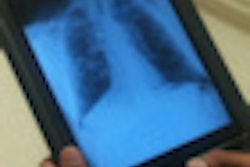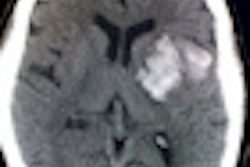A survey of more than 100 academic and nonacademic radiology departments in the U.S. on their use of portable media discovered key problems related to access, importability, and viewing issues, according to research published in the January issue of the Journal of the American College of Radiology.
As a result, radiology practices should routinely produce only CDs and DVDs that are compliant with the Integrating the Healthcare Enterprise (IHE) Portable Data for Imaging (PDI) integration profile, according to a research team led by Vivek Kalia of Johns Hopkins University in Baltimore. In addition to testing disks that they burn internally, practices should also contact institutions or providers who repeatedly send out patients with noncompliant media to encourage compliance.
"The consequences of not taking such action are largely felt by patients who must undergo repeat examinations and incur the associated costs (financial and radiation) and who must schedule more appointments and see more providers," the authors wrote.
To determine current practices for the use of portable media for medical imaging in the U.S., the researchers surveyed members of the Association of Administrators in Academic Radiology, the Association for Medical Imaging Management, and the University HealthSystem Consortium in November 2009. The survey was conducted using a stratified, nonrandom sample, 22-question electronic format (JACR, January 2011, Vol. 8:1, pp. 39-48).
Of the 102 responses, 98% said their institutions produced DICOM-compliant media, while only 2% said they were uncertain. However, only 22.2% said their institutions produced media compliant with the IHE PDI standard; 71.6% said they were uncertain.
The IHE PDI integration profile addresses how images and related information can be exchanged among imaging storage and viewing devices using DICOM-conformant media; image viewing on portable media that do not utilize DICOM file formats or IHE PDI profiles can pose a burden, according to the researchers.
The three most common reasons cited by respondents for why outside portable media were not readable or accessible were non-DICOM format/incompatible imaging files; corrupt disks (due to scratches, failed data writing, or other reasons); and the onboard image viewer does not auto-run and can't be executed.
The researchers noted that future implications from the study's findings include the potential emerging role of limited virtual private network permissions for online access to radiology examinations from frequent referral sites and also the possible role of regional health information organizations.
"In the future, we may see the emergence of 'image sharing' among various centers, eliminating the need for each and every center to store all examinations in its local PACS," the authors wrote. "This would essentially make the use of portable media unnecessary among frequent referral sites, a prospect that would help patients and practitioners avoid the problems associated with portable media use discussed in this study."
By Erik L. Ridley
AuntMinnie.com staff writer
January 4, 2011
Related Reading
Quality control is pivotal for CD image import, June 7, 2010
Analysis of imported images reveals key lessons, June 4, 2010
RIS/PACS integration with personal EHR can be a tough task, April 5, 2010
CDs may come up short in long-term storage reliability, July 2, 2009
IHE's XDS-I profile may help with CD import dilemma, April 14, 2009
Copyright © 2011 AuntMinnie.com




















